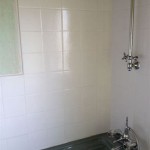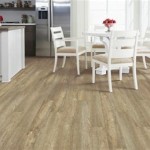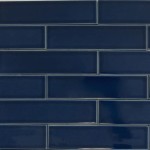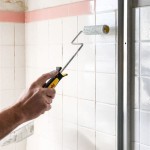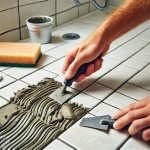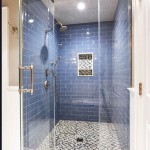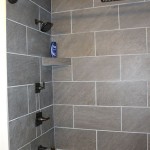Can You Put Tile On Drywall In A Shower? Understanding The Risks and Alternatives
The question of whether tile can be installed directly onto drywall within a shower enclosure is a common one among homeowners undertaking bathroom renovations. While technically possible, adhering tile directly to standard drywall in a shower environment is generally not recommended due to the inherent properties of drywall and its susceptibility to moisture damage. This article will explore the reasons behind this recommendation, the potential problems associated with tiling directly onto drywall in a shower, and the appropriate alternatives that provide a more durable and water-resistant substrate for tile installations.
Drywall, often referred to as gypsum board, is a widely used building material for interior walls and ceilings. It consists of a gypsum core sandwiched between two layers of paper. Its primary advantages include ease of installation, relatively low cost, and a smooth surface that is easily paintable. However, standard drywall is porous and readily absorbs moisture. When exposed to the humid conditions of a shower, drywall can become saturated, leading to a range of issues that can compromise the integrity of the tile installation and the surrounding structure.
Moisture Absorption and Drywall Degradation
The primary concern with using drywall as a substrate for tile in a shower is its vulnerability to moisture. The constant exposure to water and humidity within a shower environment can cause the drywall to absorb moisture, leading to swelling, softening, and eventual degradation. This process can occur even if the grout and tile are initially well-sealed, as water can penetrate through hairline cracks in the grout, through the grout itself over time, or around fixtures like showerheads and faucets.
As the drywall weakens from moisture absorption, it loses its ability to adequately support the weight of the tile. This can result in the tile detaching from the wall, creating a safety hazard and necessitating costly repairs. The degradation of the drywall can also create a breeding ground for mold and mildew, posing a health risk to occupants of the home. Furthermore, the moisture can wick into adjacent wall cavities, potentially affecting framing lumber and insulation, leading to more extensive structural damage.
It's important to note that even so-called "water-resistant" or "moisture-resistant" drywall, often identified by its green or purple color, is not entirely waterproof. While these types of drywall offer improved resistance to moisture compared to standard drywall, they are still susceptible to water damage if exposed to prolonged or excessive moisture. They are designed to withstand incidental moisture exposure, such as splashes from a sink, but not the continuous and intense moisture conditions found in a shower.
Inadequate Bonding and Tile Detachment
The surface of standard drywall is not ideal for strong and lasting tile adhesion. The paper facing of the drywall can delaminate or peel when exposed to moisture, which weakens the bond between the tile adhesive (thin-set mortar) and the substrate. This can lead to the tiles becoming loose and eventually falling off the wall. The movement of the drywall due to moisture absorption and expansion/contraction cycles further contribute to the weakening of the bond and the potential for tile detachment.
Even when using a high-quality tile adhesive, the success of the installation relies heavily on the integrity and stability of the substrate. If the drywall is compromised by moisture, the adhesive will not be able to maintain a strong bond, regardless of its formulation. The weight of the tile, especially larger or heavier tiles, puts additional stress on the adhesive and the substrate, increasing the likelihood of detachment over time. The expansion and contraction of tile and grout due to temperature fluctuations further exacerbates the problem, leading to stresses that the weakened drywall cannot withstand.
Furthermore, using improper installation techniques, such as insufficient thin-set mortar or inadequate coverage, can compound the issue of poor adhesion. Even with a suitable substrate, proper installation is crucial for a long-lasting and durable tile installation. However, even the most meticulous installation cannot compensate for a fundamentally unsuitable substrate like standard drywall in a shower environment.
Alternatives to Drywall for Shower Tile Substrates
Given the inherent risks associated with using drywall as a substrate for shower tile, it is essential to use alternative materials that provide superior water resistance and structural integrity. Several excellent options are available, each offering distinct advantages for different applications and budgets. These alternatives provide a solid foundation for tile installations and significantly reduce the risk of moisture damage and tile detachment.
Cement Board: Cement board, such as Durock or HardieBacker, is a widely used and highly recommended substrate for shower tile installations. It is composed of cement, aggregate, and reinforcing fibers, making it exceptionally durable and resistant to water damage. Cement board does not degrade, swell, or crumble when exposed to moisture, providing a stable and long-lasting base for tile. It also offers excellent adhesion for thin-set mortar and can withstand the weight of heavy tiles. Furthermore, cement board is relatively easy to cut and install, making it a popular choice for both professional contractors and experienced DIYers. When installing cement board, it is crucial to properly seal the seams with cement board tape and thin-set mortar to create a waterproof barrier.
Waterproof Membranes: Waterproofing membranes, such as Kerdi or RedGard, are another excellent option for protecting shower walls from moisture. These membranes are typically applied as a liquid or sheet material over a suitable substrate, such as cement board or moisture-resistant drywall. They create a continuous, waterproof barrier that prevents water from penetrating to the underlying structure. Liquid membranes are applied with a brush, roller, or trowel, while sheet membranes are adhered to the substrate with thin-set mortar. Both types of membranes are highly effective at preventing water damage and are compatible with a wide range of tile types and adhesives. Proper application of the membrane, including sealing seams and corners, is critical for its effectiveness.
Proprietary Waterproofing Systems: Several manufacturers offer comprehensive waterproofing systems specifically designed for shower installations. These systems typically include a combination of components, such as pre-formed shower pans, wall panels, waterproofing membranes, and sealing accessories. These systems are engineered to work together seamlessly, providing a complete and reliable waterproofing solution. While they may be more expensive than individual components, they offer peace of mind and can often simplify the installation process. Examples of these systems include Schluter-Shower System and Wedi Fundo.
Regardless of the chosen substrate, proper preparation and installation are paramount. This includes ensuring the substrate is clean, level, and properly supported. Using the correct type of thin-set mortar for the chosen tile and substrate is also essential. Following the manufacturer's instructions for both the substrate and the tile adhesive will help ensure a long-lasting and trouble-free tile installation. The use of appropriate sealing techniques, such as applying silicone caulk to corners and around fixtures, further enhances the water resistance of the shower enclosure.

Tile Over Drywall Showers A Common But Bad Practice Scott Hall Remodeling
Can You Put A Ceramic Wall Tile On Sheetrock For Basement Shower Quora
What Happens If You Tile Over Drywall In A Shower Quora

Can You Tile Over Drywall Master Building Materials Blog

6 Bad Ways To Build A Shower What Not Do Diytileguy
How Do I Finish Tiled Shower Tile Meets Wall Diy Home Improvement Forum

How To Finish Drywall Where It Meets The Shower Wallboard Trim Tool

The Complete Guide To Installing Tile On Shower Or Bathtub Walls

Replace Bathroom Drywall With Tiled Walls Fix It Handyman

Waterproof Bathtub Shower Walls Over Drywall
Related Posts

